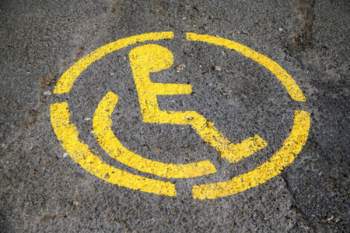
Individuals with Disabilities Education Act

INDIVIDUALS WITH DISABILITIES EDUCATION ACT TEXT
What is the Individuals with Disabilities Education Act?
The Individuals with Disabilities Education Act (IDEA) is a federal law that institutes mandates for the education of youths with disabilities, ranging from birth to 18 years of age.
How do states conform to federal mandates on education?
The Individuals with Disabilities Education Act is applicable only to states that accept federal funding for education. Compliance with IDEA is used as a condition for receiving federal grants and all states accept federal money for education which means that IDEA is adopted all over the United States. This is called a “spending clause.”
What is the predecessor to the Individuals with Disabilities Education Act?
Public Law 94-142 or the Education for All Handicapped Children Act extended the right of public education to disabled students and affirmed their right to equal access and reasonable accommodation of their needs.
Students are not to be excluded on the basis of disability by their school district. The district must provide special services for the disabled student including a learning environment that is similar to that of the regular student body.
The school is responsible for identifying potential special needs students, and anticipate said needs accordingly. Special needs programs must be equipped with adequate materials and specialized teachers who are experienced with disabled children.
The school must also maintain a process by which parents can contest the decisions made for their student and ensure that the parents remain important partners throughout the decision making process. The parents could seek redress in court if the need arose, although new provisions in the IDEA limited that option with specialized administrative dispute resolution services.
The Education for All Handicapped Children was renamed Individuals with Disabilities Education Act in 1990, with many of the same provisions but some reforms and new mandates that better involve the parents, cut down on potential litigation and make better attempts at keeping a child’s special education nominal and focused on keeping the child in a normal classroom setting.
What is the goal of IDEA?
Through reasonable accommodation and specialized, individualized programs for the disabled, IDEA aims to provide children with the knowledge and skills to take care of themselves and seek employment if their condition allows them to do so. To date, six million children receive education under the IDEA mandate. Prior to Public Law 94-142, only 1 in 5 students received an education.
What is a disability under the Individuals with Disabilities Education Act?
Disabilities under IDEA do not distinguish between physical and mental impairments and includes mental retardation, hearing impairments, blindness, autism, brain injuries and learning disabilities. The concept of a “zero-reject rule” prevents children from ineligibility, requiring schools to render services even if the student is in a coma. For students to be covered under IDEA provisions, there must be evidence that they not only have a disability, but the disability prevents them from learning and participating to the best of their ability in a traditional classroom setting.
What is the obligation of schools under IDEA?
Like the preceding Education for All Handicapped Children Act, IDEA requires the school to create an Individualized Education Program to meet the special needs of the student. They are required to transport the student to school and provide that student with at least one free meal during the school day.
If school officials suspect a potential problem, they must alert the student's parents and inform them that an evaluation is necessary. The notice for evaluation must be presented in writing and approved by the parents to be formally undertaken. Parents are entitled to a lawyer, social worker or advocate, provided that that individual is knowledgeable in the IEP process and can help guide the parents through the process. The parents may choose to bring doctors that have better knowledge of the child’s condition or another parent that has knowledge of the IEP process.
Depending on the state, a team of professionals involving social workers, state specialist and psychologists will collaborate on an evaluation. All of the student’s teachers are required to be at this meeting. One constant will be the presence of the parents who are required by law to be allowed in the process.
The goal here is to make the student’s school experience as normal as possible and maximize the student’s involvement in regular school activity. Even if the child must be in special education, the team must make meaningful attempts to have the student interact and participate with non-disabled students. The Least Restrictive Environment rule attempts to maximize the amount of time the student will spend with non-disabled students, outside of special education settings to better adjust and socialize the student.
An IEP must consider the student’s present level of academic ability and set goals to improve the student’s academic and functional abilities. The plan must be consistent and conform to regulations that ensure the long term welfare of the student in this process. When the student reaches an appropriate age, the team must have a transition plan for when the student turns 16 and must prepare for post-secondary life. The student may become part of the IEP upon reaching the age of 14 and make decisions regarding the nature and structure of the program. Lastly, the child must receive relevant instruction as part of his or her IEP. Blind children, for example, must receive instruction in braille, so that they may function beyond the school setting when they become adults. A child in an IEP is not evaluated by the traditional academic standards like his or her peers, but by an individualized measurement of progress, reaching specific goals, as set by the IEP team.
What is FAPE in relation to the Individuals with Disabilities Education Act?
FAPE stands for Free Appropriate Public Education, which is a provision of IDEA that guarantees every child an IEP, a challenging curriculum that benefits the child and individual treatment, rather than decision-making that collectively affects all the special needs children.
What are other provisions of the Individuals with Disabilities Education Act?
In addition to FAPE and Least Restrictive Environment regulations, IDEA also provides specific guidelines for disciplining special needs students, as they should not always be held to the same standards of behavior as typical students. There is typically a ten-day disciplinary threshold for students. Anytime that threshold is exceeded, there must be a hearing to determine if the child should remain in the school. The “stay put” rule tries to keep the student in his or her school, unless the behavior constitutes a significant danger to others. The IEP committee will also need to discuss the child’s conduct and make adjustments if necessary for the child’s behavior, especially if it is directly caused by the disability.
The Early Intervention Plan is a new feature introduced by Part C of the IDEA. This part provides care and attention for the needs of disabled infants and toddlers and the formation of an Individualized Family Program to cater to the needs of the child and parents before the child enters public schooling.
What are the rights of the parents?
In order to ensure that IDEA best serves the interests of the parents and succeeds in providing all children with adequate access to public education, there are alternate dispute resolution services and safeguards that proclaim the rights of the parents to be involved in decisions about the future and education of their child. Previously, it had been easier for parents to take school administrators to court over disagreements regarding the child’s education. Since then, to reduce the burden on the judicial system and maintain the relationship between the school and the parents, there are a number of dispute resolution and medication services available to resolve potential issues.
How has IDEA been amended?
Since IDEA came into law in 1990, it has received three major re-authorizations. In 1997, IDEA was amended to include children with learning disabilities between the ages of 3 and 9. Part C was also added to provide assistance to the parents of infants and toddlers. The mediation procedures were also added in 1997. The 2004 revision reinforced provisions for disciplining students, revised evaluation requirements for students with learning disabilities and implemented trial IEP programs in fifteen states. In 2009, 12.2 billion dollars were appropriated by the federal government to cover IDEA provisions over criticism that the program was an “unfunded mandate” that passed strict regulations and requirements on local school officials with providing adequate funding to help them meet the needs of disabled students.



















